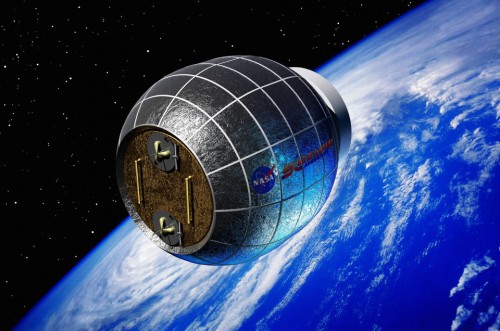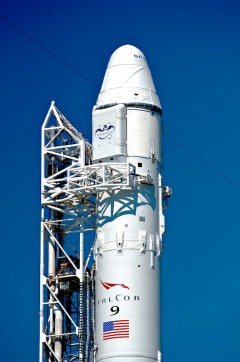
On Wednesday, Jan. 16, 2013, NASA’s Deputy Administrator Lori Garver announced plans for the space agency to test out inflatable space habitat technology on the International Space Station (ISS). NASA has awarded Bigelow Aerospace a $17.8 million contract to demonstrate this technology via a Bigelow Expandable Activity Module (BEAM), which is slated to fly to the orbiting laboratory in 2015 and will remain on orbit for a two-year period. During this time, the module will demonstrate the viability of this technology for NASA uses.
BEAM is currently slated to be launched to the ISS on a Space Exploration Technologies (SpaceX) Dragon spacecraft. The module will be part of the cargo delivered to the space station during the eighth resupply flight SpaceX will conduct under the Cargo Resupply Services contract that the Hawthorne, Calif.–based company has with NASA.
“Today we’re demonstrating progress on a technology that will advance important long-duration human spaceflight goals,” Garver said. “NASA’s partnership with Bigelow opens a new chapter in our continuing work to bring the innovation of industry to space, heralding cutting-edge technology that can allow humans to thrive in space safely and affordably.”

If all goes according to plan, crew on board the ISS will use the station’s robotic arm to install BEAM to the aft port of the station’s Tranquility node. The crew will then activate BEAM and the module will inflate via a pressurization system that is part of the module. BEAM will then be tested over the course of the next two years by both controllers on the ground as well as crew on board the ISS. Key issues that need to be studied will be the module’s integrity and its leak rate. BEAM will be fitted with a range of instruments to help monitor its reaction to being a part of the ISS, as well as being exposed to the harsh environment of space.”The International Space Station is a uniquely suited test bed to demonstrate innovative exploration technologies like the BEAM,” said William Gerstenmaier, associate administrator for human exploration and operations at NASA Headquarters in Washington. “As we venture deeper into space on the path to Mars, habitats that allow for long-duration stays in space will be a critical capability. Using the station’s resources, we’ll learn how humans can work effectively with this technology in space, as we continue to advance our understanding in all aspects for long-duration spaceflight aboard the orbiting laboratory.”
During its life as part of the ISS, astronauts will enter the module to test how it is performing. After its two-year tour-of-duty is complete, it will be jettisoned from the station and will burn up as it re-enters Earth’s atmosphere.
BEAM falls under NASA’s Advanced Exploration Systems (AES) Program, which works to develop new technologies that are aimed at future crewed missions. It is hoped that BEAM will aid NASA’s human space flight ambitions for points beyond the orbit of Earth.
Want to keep up-to-date with all things space? Be sure to “Like” AmericaSpace on Facebook and follow us on Twitter:@AmericaSpace




One Comment
One Ping
Pingback:United States and North American News | David Reneke | Space and Astronomy News